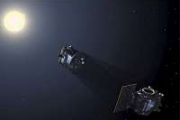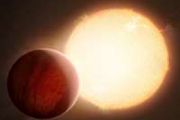
Copernical Team
Rocket Lab Secures U.S. Air Force Contract for Neutron Re-Entry Mission
 Rocket Lab USA, Inc. (Nasdaq: RKLB) has announced that it will launch its new medium-lift reusable rocket, Neutron, for the U.S. Air Force Research Laboratory (AFRL) as part of a pioneering Rocket Cargo mission. This mission, set for no earlier than 2026, will serve as a critical step in developing rapid, point-to-point cargo transportation capabilities, aiming to bolster global defense logistic
Rocket Lab USA, Inc. (Nasdaq: RKLB) has announced that it will launch its new medium-lift reusable rocket, Neutron, for the U.S. Air Force Research Laboratory (AFRL) as part of a pioneering Rocket Cargo mission. This mission, set for no earlier than 2026, will serve as a critical step in developing rapid, point-to-point cargo transportation capabilities, aiming to bolster global defense logistic Sivers Semiconductors Joins Global Push for Satellite Network Interoperability
 Sivers Semiconductors AB (STO: SIVE), a leading innovator in photonics and wireless technology, has officially joined the Digital Intermediate Frequency (IF) Interoperability (DIFI) Consortium, a global industry group dedicated to enhancing interoperability within satellite and ground system networks.
The DIFI Consortium is a collaborative initiative focused on establishing open, standards
Sivers Semiconductors AB (STO: SIVE), a leading innovator in photonics and wireless technology, has officially joined the Digital Intermediate Frequency (IF) Interoperability (DIFI) Consortium, a global industry group dedicated to enhancing interoperability within satellite and ground system networks.
The DIFI Consortium is a collaborative initiative focused on establishing open, standards DLR Establishes New Institute of Space Research to Advance Optical Sensor Technologies and Planetary Science
 The German Aerospace Center has established a new Institute of Space Research at the Berlin-Adlershof technology park, consolidating its capabilities in space instrumentation and research. This new institute, formally launched on May 1, 2025, aims to become a global leader in the development of optical sensor systems, planetary science, and Earth observation technologies.
Formed through th
The German Aerospace Center has established a new Institute of Space Research at the Berlin-Adlershof technology park, consolidating its capabilities in space instrumentation and research. This new institute, formally launched on May 1, 2025, aims to become a global leader in the development of optical sensor systems, planetary science, and Earth observation technologies.
Formed through th Earth from Space: Northwest Sardinia, Italy
 Image:
Part of the Italian island of Sardinia is featured in this image captured by the Copernicus Sentinel-2 mission.
Image:
Part of the Italian island of Sardinia is featured in this image captured by the Copernicus Sentinel-2 mission. Week in images: 05-09 May 2025

Week in images: 05-09 May 2025
Discover our week through the lens
Gripping exploration
 Image:
Gripping exploration
Image:
Gripping exploration iDirectGov 450 SDR Modem Successfully Integrated with Airbus DS Ranger Flyaway Terminal
 iDirect Government (iDirectGov), a leading provider of secure satellite communications for U.S. military and government applications, has successfully completed field trials of its 450 Software Defined Radio (SDR) modem in collaboration with Airbus DS Government Solutions. This integration marks a significant milestone in enhancing MILSATCOM capabilities, offering greater flexibility, security,
iDirect Government (iDirectGov), a leading provider of secure satellite communications for U.S. military and government applications, has successfully completed field trials of its 450 Software Defined Radio (SDR) modem in collaboration with Airbus DS Government Solutions. This integration marks a significant milestone in enhancing MILSATCOM capabilities, offering greater flexibility, security, NRO director shares personal insights on leadership at NASA workshop
 Communicating well, connecting with mentors, and saying yes to new challenges are some of the keys to unlocking success in leadership, NRO Director Dr. Chris Scolese told an audience of aspiring managers gathered at NASA headquarters.
"I think it's really valuable to share," Scolese said. "I had many people that helped me out."
Scolese shared his experiences at NASA's Project Managem
Communicating well, connecting with mentors, and saying yes to new challenges are some of the keys to unlocking success in leadership, NRO Director Dr. Chris Scolese told an audience of aspiring managers gathered at NASA headquarters.
"I think it's really valuable to share," Scolese said. "I had many people that helped me out."
Scolese shared his experiences at NASA's Project Managem Space Force documentary screened on Capitol Hill, highlighting need for space superiority
 Guardians connected with members of Congress at a special screening of "The U.S. Space Force - America's Invisible Front Line" documentary at the U.S. Capitol Visitor Center April 30. The event aimed to help inform lawmakers on the Space Force's critical role in national security, the growing need for investment and the continued need for additional resourcing of military space capabilities.
Guardians connected with members of Congress at a special screening of "The U.S. Space Force - America's Invisible Front Line" documentary at the U.S. Capitol Visitor Center April 30. The event aimed to help inform lawmakers on the Space Force's critical role in national security, the growing need for investment and the continued need for additional resourcing of military space capabilities. Defense contractor successfully tests hypersonic flight vehicle
 Stratolaunch successfully tested for the second time a fully recoverable uncrewed hypersonic vehicle for the Department of Defense in March, the private contractor and federal agency said Monday.
Stratolaunch, based in the Mojave Desert in California and Nevada, first tested one in December.
Reusable hypersonic flights are the first since the manned X-15 program was scrapped in 1
Stratolaunch successfully tested for the second time a fully recoverable uncrewed hypersonic vehicle for the Department of Defense in March, the private contractor and federal agency said Monday.
Stratolaunch, based in the Mojave Desert in California and Nevada, first tested one in December.
Reusable hypersonic flights are the first since the manned X-15 program was scrapped in 1 































